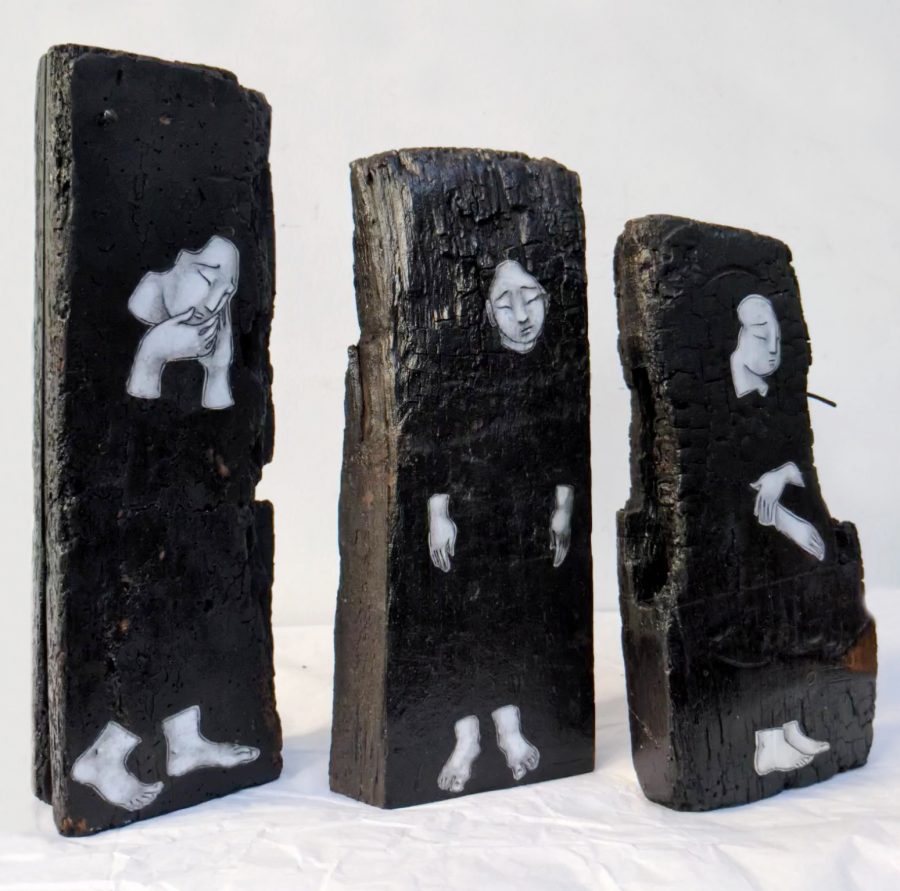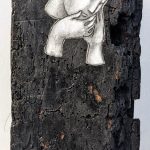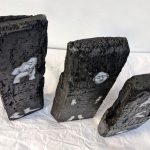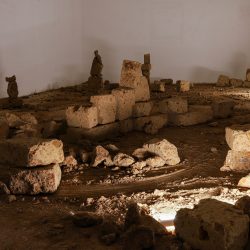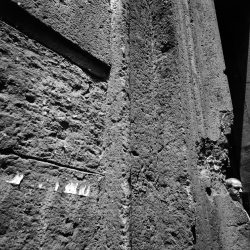work
wabi-sabi
| category | Other |
| subject | Political / Social, Nature, Human figure |
| tags | imperfezione, wabi-sabi, yakasugi, cenere, legno , simulacro, vita |
| base | 15 cm |
| height | 30 cm |
| depth | 6 cm |
| year | 2022 |
burnt wood, paper, graphite, nails
An ancient Japanese technique, but also of the aborigines of the island of Melville, involves burning the wood to make it resistant to fire, water and mold.
The term wabi-sabi, on the other hand, derives from a Japanese word and means "the beauty of imperfection": it is simulacra of transience, of the fragility of the passage of time and the sweetness of vanishing. They are pieces of burnt wood from which the simulacrum of man emerges, "a thin veil identical to the thing itself" which according to Lucretius in contact with the eye makes the observer feel the sense of perception and the magnificent transience of dreams.
An ancient Japanese technique, but also of the aborigines of the island of Melville, involves burning the wood to make it resistant to fire, water and mold.
The term wabi-sabi, on the other hand, derives from a Japanese word and means "the beauty of imperfection": it is simulacra of transience, of the fragility of the passage of time and the sweetness of vanishing. They are pieces of burnt wood from which the simulacrum of man emerges, "a thin veil identical to the thing itself" which according to Lucretius in contact with the eye makes the observer feel the sense of perception and the magnificent transience of dreams.



